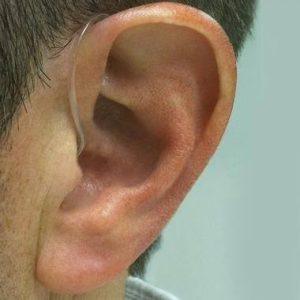When you begin to experience a loss of hearing, it is essential to understand the type that you are experiencing. When you see your healthcare practitioner, they will be able to inform you about the type you have. The following is a basic educational overview to help you learn about the different types of hearing loss.
Hearing Loss Types
The type of hearing loss you have is determined by the part of the ear that is damaged. There are three basic types of hearing loss to be aware of:
Conductive Hearing Loss
Conductive hearing loss is when you are unable to hear correctly due to problems with the ear canal, eardrum, or middle ear.
It can be caused by several things:
- The outer ear, ear canal, or middle ear structures has not developed properly
- A virus such as a cold causes fluid to build in the middle ear
- Ear infection in the canal
- Benign tumors
- Impacted earwax
- Foreign body in the ear
- Otosclerosis
- Allergies
- Perforated eardrum
When you experience conductive hearing loss, the sound is not conducted properly through the outer ear canal to the eardrum and the middle ear. On a day to day level, it means that you will not hear regular sound levels correct and have a reduction in your ability to hear faint sounds. It is possible to fix conductive hearing loss, either medically or surgically, in some cases.
Treatments of Conductive Hearing Loss:
The treatments for conductive hearing loss vary quite a bit, depending on the cause. Causes that can be corrected by surgery include congenital absence of ear canal or failure of the ear canal to be open at birth, congenital absence, malformation, or dysfunction of the middle ear structures. If the cause cannot be corrected by surgery, bone conduction hearing aids or surgical implants may be used.
If the hearing issues are caused by an infection, the most common treatment is antibiotics or antifungal medication. Chronic infections may require surgery.
Please see your healthcare provider for more treatment options.
Sensorineural Hearing Loss
Sensorineural hearing loss (SNHL) is the most common type of hearing loss; it is also known as nerve-related hearing loss. It happens when the inner ear or the nerve pathway from the inner ear to the brain is damaged. Generall SNHL cannot be treated with surgery.
When experiencing SNHL it will become difficult to hear faint sounds and speech can become muffled and difficult to understand.
SNHL is usually caused by:
- Exposure to loud noise
- Illnesses or disease
- Hereditary Hearing loss
- Aging
- Head trauma
- Malformation of the inner ear
- Exposure to loud noise
- Tumors
Treatment of Sensorineural Hearing Loss:
There is a wide variety of treatments for SNHL depending on what is the cause. If it has been caused by exposure to excessively loud noise medical therapy with corticosteroids may help. If caused by head trauma emergency surgery may be required. Illness or infections may be able to treat the condition medically. If you think you are experiencing SNHL it is best to consult with your doctor on the best treatment option for you.
Mixed Hearing Loss
In some cases, conductive hearing loss occurs in combination with a sensorineural hearing loss (SNHL). This means there may be damage in both the outer or middle ear and in the inner ear or auditory nerve. If this happens it is called mixed hearing loss so it is a combination of conductive and sensorineural hearing loss.
Please see your doctor for more information on what hearing loss you may be experiencing and treatment options.
- The Best Hearing Amplifiers of 2021 - October 23, 2020
- Best TV Soundbars for Hearing Impaired - October 23, 2020
- Hearing Devices to Help People in Nursing Homes and Hospitals - October 23, 2020


